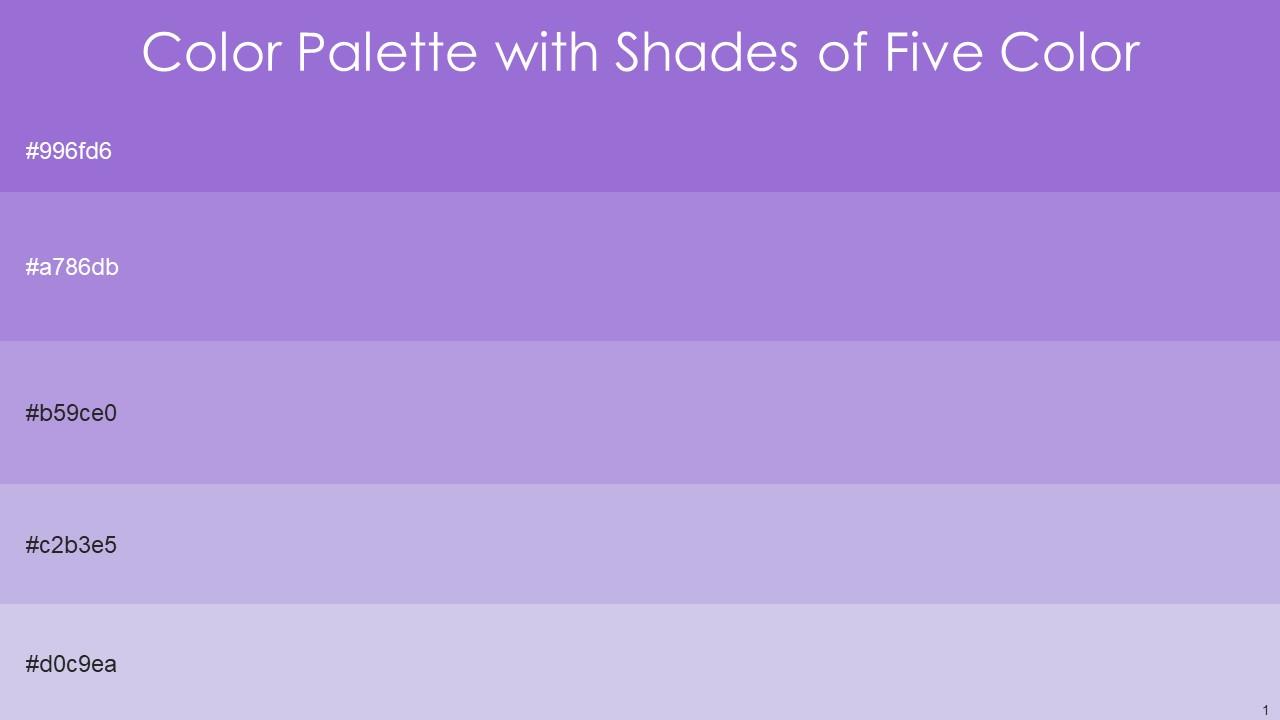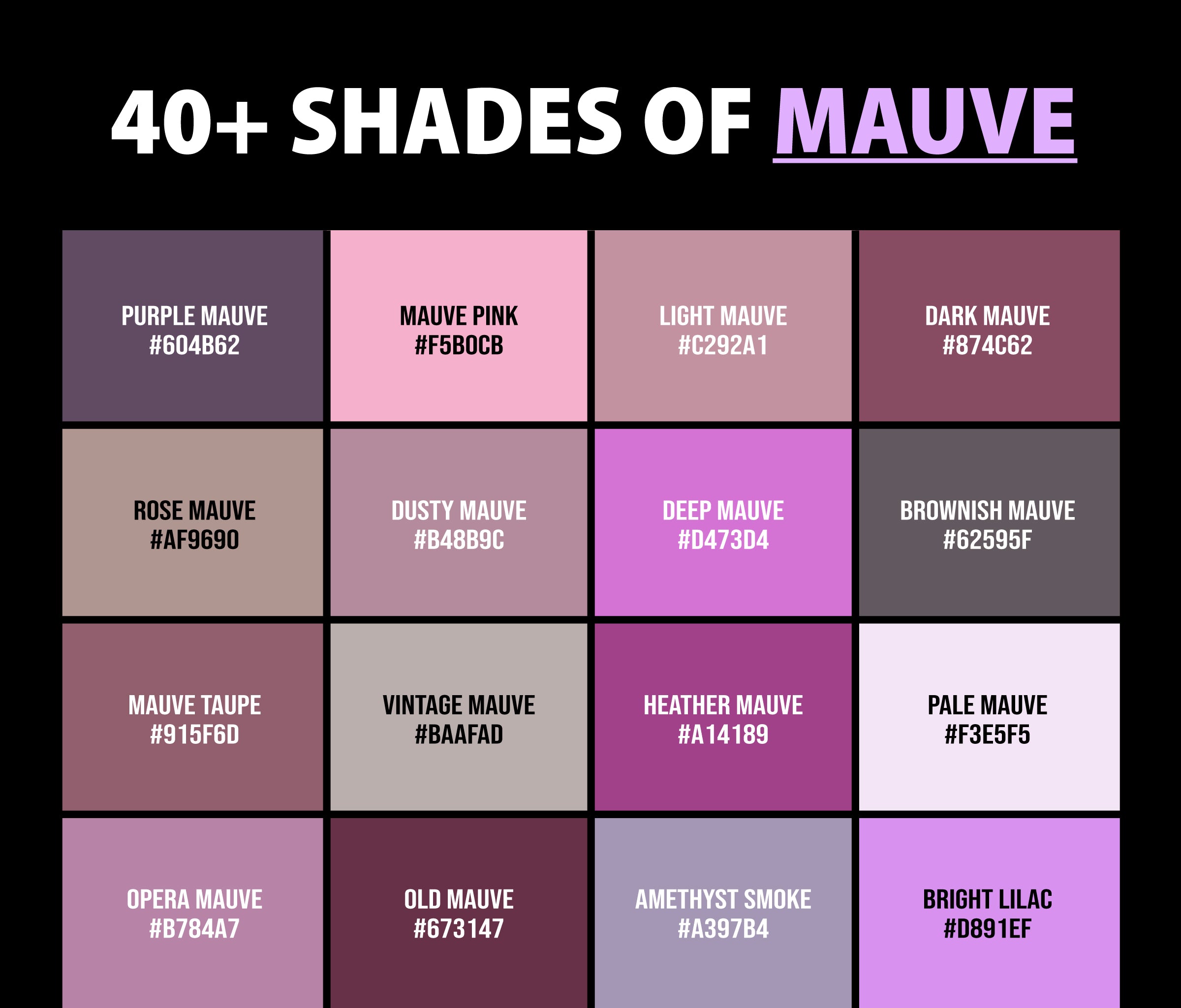From soft lilacs to deep violets, the world of shades of lavender offers a spectrum of colors that evoke elegance, serenity, and sophistication. Lavender, often associated with tranquility and relaxation, has become a favorite among designers, artists, and homeowners alike. This versatile color family can transform any space or design project, making it a timeless choice for those seeking a touch of grace and charm. Whether you're looking to incorporate lavender into your home decor, fashion choices, or creative projects, understanding its various shades can help you make informed decisions that reflect your unique style and personality.
Beyond its aesthetic appeal, the psychological impact of lavender shades cannot be overlooked. Studies have shown that these colors can promote calmness and reduce stress, making them ideal for spaces where relaxation is key. Lavender's versatility allows it to complement both warm and cool tones, making it a perfect choice for blending with other colors in your palette. As we delve deeper into this guide, you'll discover the fascinating history, cultural significance, and practical applications of this beloved color family.
This article aims to provide a comprehensive overview of shades of lavender, exploring their origins, applications, and impact on design and psychology. By the end, you'll have a deeper appreciation for this versatile color and the many ways it can enhance your life. Whether you're a professional designer, a DIY enthusiast, or simply someone who loves exploring the world of color, this guide will serve as an invaluable resource.
Read also:Goku Meme The Rise Of The Internets Favorite Saiyan
Table of Contents
- 1. What Are the Most Popular Shades of Lavender?
- 2. The History and Cultural Significance of Lavender
- 3. How Do Shades of Lavender Impact Mood and Emotions?
- 4. Where Can You Use Shades of Lavender in Home Decor?
- 5. Can Lavender Be Incorporated into Fashion Design?
- 6. Shades of Lavender in Digital Design and Branding
- 7. What Are the Best Complementary Colors for Lavender?
- 8. Shades of Lavender in Nature and Its Symbolism
- 9. How to Choose the Right Shade of Lavender for Your Project?
- 10. Frequently Asked Questions About Shades of Lavender
What Are the Most Popular Shades of Lavender?
Lavender is not just a single color but a family of hues that range from pale lilacs to rich violets. Some of the most popular shades of lavender include Lavender Mist, Amethyst, Lilac, Wisteria, and Grape. Each of these shades carries its own unique characteristics and can evoke different emotions depending on the context in which it is used. Lavender Mist, for example, is a soft and delicate shade that is perfect for creating a serene atmosphere, while Amethyst is more vibrant and bold, making it ideal for adding a pop of color to any design.
When choosing a shade of lavender, it's important to consider the purpose and setting. For instance, if you're designing a bedroom, you might opt for a lighter, more soothing shade to promote relaxation. On the other hand, if you're working on a marketing campaign, a bolder shade like Amethyst could help capture attention and convey energy and vitality.
The History and Cultural Significance of Lavender
Lavender has a rich history that dates back thousands of years. The name itself is derived from the Latin word "lavare," meaning "to wash," reflecting its early use in Roman baths for its aromatic properties. Throughout history, lavender has been associated with purity, elegance, and spirituality. In ancient Egypt, it was used in the mummification process, while in medieval Europe, it was believed to ward off evil spirits and bring good luck.
Today, lavender continues to hold cultural significance in many parts of the world. In aromatherapy, it is prized for its calming effects, and in fashion and design, it is celebrated for its timeless beauty. The versatility of shades of lavender ensures that it remains a popular choice across various industries, from interior design to digital media.
How Do Shades of Lavender Impact Mood and Emotions?
Color psychology plays a significant role in how we perceive and interact with our environment. Shades of lavender are often associated with calmness, relaxation, and tranquility. These colors can help reduce stress and anxiety, making them ideal for use in spaces where relaxation is paramount, such as bedrooms, spas, and meditation rooms.
Research has shown that lavender can also improve sleep quality and promote a sense of well-being. This makes it a popular choice for products aimed at enhancing mental health, such as candles, essential oils, and bedding. By incorporating shades of lavender into your daily life, you can create an atmosphere that supports emotional balance and inner peace.
Read also:Two Virgins Cover A Deep Dive Into The Iconic Album Art
Where Can You Use Shades of Lavender in Home Decor?
Shades of lavender can be seamlessly integrated into various aspects of home decor, offering endless possibilities for creativity and personal expression. From wall paint to furniture upholstery, lavender can add depth and sophistication to any room. Consider using a soft lavender hue on your bedroom walls to create a calming retreat or incorporating a bold amethyst accent chair to make a statement in your living room.
Accessories like throw pillows, curtains, and rugs can also feature shades of lavender, adding pops of color without overwhelming the space. For a cohesive look, pair lavender with complementary colors such as cream, gray, or soft green. By thoughtfully incorporating these hues into your home, you can create a space that reflects your personal style and promotes relaxation.
Can Lavender Be Incorporated into Fashion Design?
Absolutely! Lavender has long been a favorite in the world of fashion, offering designers and fashion enthusiasts endless opportunities for creativity. Whether it's a delicate lavender dress or a bold amethyst jacket, this color family can add flair and sophistication to any wardrobe. Lavender is particularly popular in spring and summer collections, where its light and airy qualities align perfectly with the season's themes.
In recent years, lavender has gained traction in menswear as well, with designers experimenting with subtle shades in suits and accessories. For those looking to incorporate lavender into their fashion choices, consider starting with small accessories like scarves or handbags before committing to larger pieces. This allows you to experiment with the color without making a major investment.
Shades of Lavender in Digital Design and Branding
In the digital age, shades of lavender have found a new home in web design, app development, and branding. These colors can convey a sense of trust, reliability, and innovation, making them ideal for businesses in the health, wellness, and technology sectors. When used effectively, lavender can enhance user experience by creating a calming and inviting atmosphere that encourages engagement.
For example, a wellness app might use soft lavender tones to create a serene interface that promotes relaxation and mindfulness. Similarly, a tech company could incorporate a bold amethyst hue into its logo to convey energy and forward-thinking. By strategically using shades of lavender in digital design, businesses can establish a strong brand identity that resonates with their target audience.
What Are the Best Complementary Colors for Lavender?
When designing with shades of lavender, it's important to consider complementary colors that enhance their beauty and create a harmonious palette. Some of the best complementary colors for lavender include cream, white, gray, soft green, and pale yellow. These colors can help balance the cool tones of lavender, creating a visually appealing and cohesive look.
For a more dramatic effect, consider pairing lavender with contrasting colors like navy blue, charcoal gray, or deep burgundy. This can add depth and dimension to your design, making it stand out while still maintaining a sense of elegance. Experimenting with different combinations can help you find the perfect palette that reflects your vision and enhances the beauty of lavender.
Shades of Lavender in Nature and Its Symbolism
In nature, shades of lavender can be found in flowers, plants, and even minerals, adding beauty and meaning to the world around us. The lavender flower, for instance, is renowned for its aromatic properties and has long been associated with purity, grace, and devotion. Similarly, amethyst, a type of quartz, is valued for its deep purple hue and is believed to possess healing properties.
Symbolically, lavender is often linked to spirituality, calmness, and renewal. In many cultures, it is seen as a color that bridges the gap between the physical and spiritual worlds, making it a powerful tool for meditation and introspection. By connecting with the natural world through shades of lavender, we can deepen our appreciation for its beauty and significance.
How to Choose the Right Shade of Lavender for Your Project?
Selecting the right shade of lavender for your project depends on several factors, including the purpose, setting, and desired effect. Start by considering the mood you wish to create and the emotions you want to evoke. For example, if you're designing a spa, you might choose a soft lavender shade to promote relaxation. Conversely, if you're creating a marketing campaign, a bolder shade like amethyst could help capture attention and convey energy.
It's also important to think about the context in which the color will be used. Will it be a dominant color or an accent? How will it interact with other colors in the palette? By answering these questions, you can make an informed decision that aligns with your goals and enhances the overall impact of your project.
Frequently Asked Questions About Shades of Lavender
1. What is the difference between lavender and lilac?
Lavender and lilac are often used interchangeably, but they represent different shades within the purple family. Lavender typically has a lighter, bluish tone, while lilac is more muted and pinkish.
2. Can lavender be used in professional settings?
Absolutely! Lavender can convey professionalism and sophistication when used appropriately. For example, a soft lavender hue in office decor can create a calming atmosphere that promotes productivity.
3. Are there any cultural taboos associated with lavender?
While lavender is generally well-received, its symbolism can vary across cultures. In some regions, it may be associated with mourning or spirituality, so it's important to consider cultural context when using it in design.
4. How can I incorporate lavender into my daily life?
Start small by adding lavender-scented products to your routine or incorporating soft lavender hues into your home decor. Over time, you can experiment with bolder shades in fashion and design to create a personalized look.
By exploring the world of shades of lavender, you can unlock its potential to enhance your life in countless ways. Whether you're designing a space, creating a brand, or simply seeking a touch of elegance, lavender offers endless possibilities for creativity and expression.



